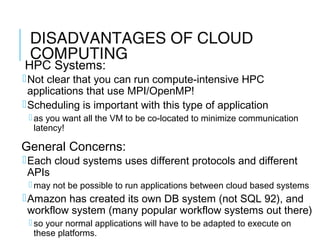Cloud computing is a model for enabling ubiquitous, convenient, on-demand network access to a shared pool of configurable computing resources (e.g. networks, servers, storage, applications, and services) that can be rapidly provisioned and released with minimal management effort or service provider interaction. Key characteristics of cloud computing include on-demand self-service, broad network access, resource pooling, rapid elasticity, and measured service. Common cloud computing service models are Software as a Service (SaaS), Platform as a Service (PaaS), and Infrastructure as a Service (IaaS).





































